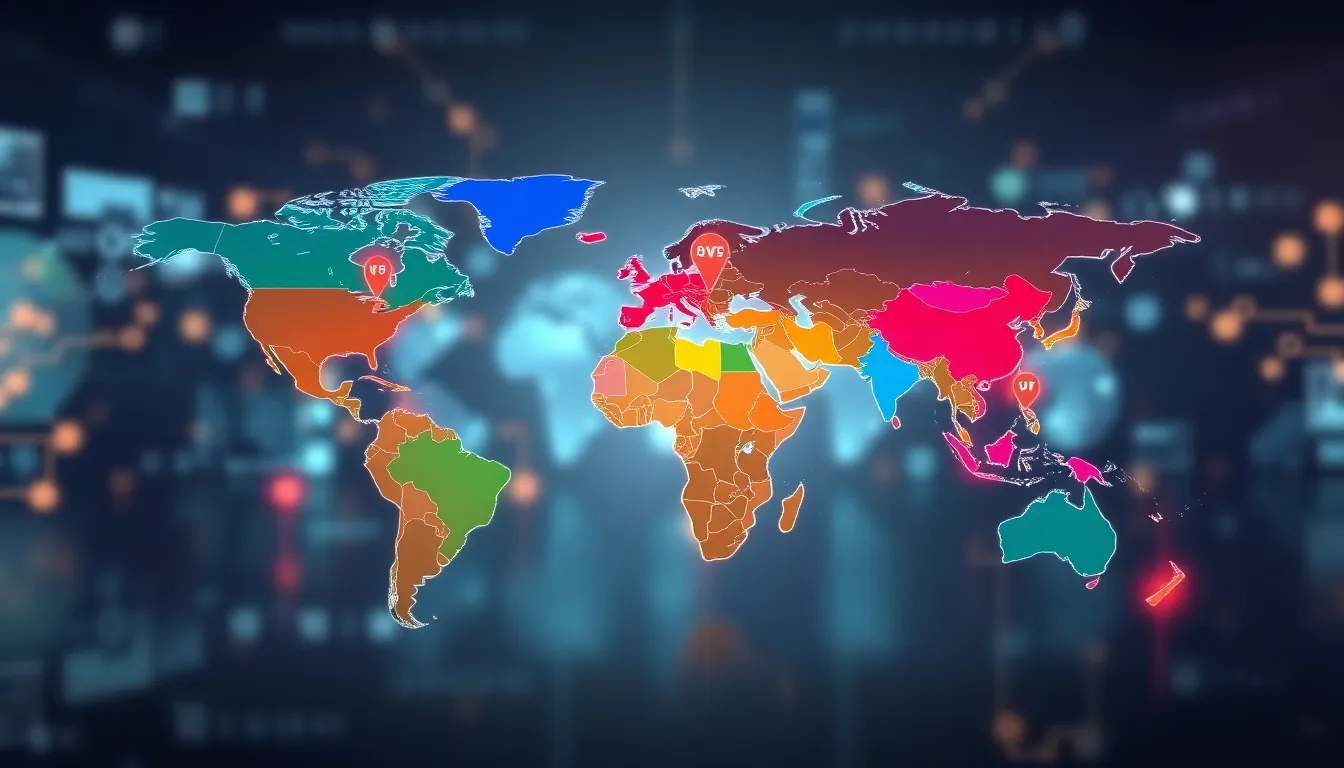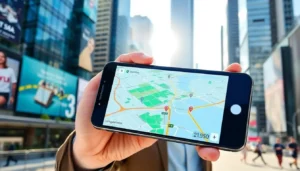Table of Contents
ToggleImagine a world where borders blur, entire nations vanish, and new powers emerge from the most unexpected corners of the globe. The future world map might look like a chaotic masterpiece created by a blindfolded artist, but one thing’s for sure: it’s going to be a wild ride. In this text, we’re diving deep into the intriguing shifts that could alter our planet’s layout by 2050. From geopolitical upheavals to tech revolutions, buckle up for a thought-provoking journey.
Geopolitical Changes on the Horizon

As we peer into the future, the political landscape is bound to experience seismic shifts. The rise of new powers is likely to redefine global alliances and challenge established norms. Countries often regarded as developing may transform into economic juggernauts, altering the balance of power.
Also, regional conflicts could reshape borders entirely. Countries like India and China are predicted to expand their influence in Asia, while Africa may present a unified front, countering historical colonization effects. Nations with rich natural resources will likely gain strategic importance, leading to new geopolitical tensions.
In the interest of maintaining stability, existing global organizations might evolve or even give rise to entirely new entities. Imagine a continent navigating these choppy waters, securing partnerships that have yet to be conceived. Understanding these dynamics is not just a matter of speculation, it’s essential for grasping the future map of our world.
Environmental Factors Shaping Geography
The future world map isn’t just about politics: Mother Nature is throwing her own wrench into the gears. Climate change is likely to influence geography like never before. Rising sea levels will drown low-lying islands and coastal cities, prompting a significant reshaping of maps. Cities like Venice might become historical artifacts rather than bustling tourist attractions.
Natural disasters could dictate movement and human settlement patterns. Areas prone to flooding or extreme temperatures will likely see migration flows. As people flee from disaster zones, they will settle in regions not previously considered viable, really flipping the script on geography.
Also, shifts in agricultural zones could spark food shortages and influence global trade patterns. These environmental factors will become more pronounced as industries adapt to a changing climate, redefining how humans interact with the planet.
Technological Advancements and Their Impact
Technology is another game-changer that can reshape the future world map. Remote work technologies and virtual reality are pioneering shifts in how people perceive geography itself. Entire industries might emerge far removed from traditional economic centers, making mapmakers stretch their imaginations.
Virtual communities could thrive, allowing individuals to collaborate regardless of geographical boundaries. This shift may cause a breakdown of conventional notions of nations and territories as digital realms become just as significant as physical locations.
Also, advancements in transportation, from hyperloops to electric drones, can drastically shorten distances, making the world feel a lot smaller. Regions that were once out of reach could suddenly become accessible, further limiting the relevance of today’s maps.
Economic Shifts and Emerging Markets
By 2050, the economic landscape will likely be vastly different. Emerging markets could lead the way, challenging traditional economic powerhouses. Countries in Africa and Southeast Asia are poised for economic growth fueled by young populations and burgeoning tech industries.
The global market will increasingly revolve around renewable energy, making nations rich in solar, wind, and other resources pivotal to future economies. As fossil fuels diminish in value, the map might reflect wealth centered around sustainable industry hubs.
Financial literacy will also play a role. Nations prioritizing education may thrive, creating a ripple effect that alters established economic hierarchies. This economic dynamism could lead to a stretching of traditional trade routes, shifting wealth distribution across continents.
Cultural and Social Transformations
Cultural and social dynamics within nations will also feed into the future world map. As people migrate, they bring along traditions, art, and practices that blend into their new homes. This can cultivate rich multicultural societies but may also spark conflicts as communities adapt to rapid changes.
Digital platforms empower ideas to transcend national boundaries, fostering a global culture. Languages and customs will intermingle, leading to the emergence of entirely new identities.
Social movements advocating for various causes will further shape borders in unexpected ways. This could prompt nations to reconsider their governance styles and social contracts, potentially leading to peaceful separations or even new formations based on shared interests.
The Role of Climate Change in World Mapping
Climate change isn’t just an abstract concern: it’s a driving force that will dictate geographic realities. Coastal areas will vanish, and new landforms will emerge, creating a tapestry of political borders that will require serious reconsideration.
Regions will shift from agricultural to inhospitable due to temperature changes, which will affect where people choose to settle. Adaptation strategies might include creating floating cities or elevating existing structures. Imagine a world where maps constantly evolve to reflect new realities shaped by climate resilience initiatives.
Predictions and Speculations for 2050
So, what can we expect in 2050? Speculations suggest a multipolar world, where several nations wield significant influence. Emerging markets could disrupt global norms, and our understanding of geopolitics may shift dramatically.
Expect to see new alliances formed around shared interests in technology and sustainability, leading to a reconfiguration of existing entities. National lines blur as cultures intermingle, making the world feel more interconnected.
Maps will need to be revisited regularly, as evolving dynamics challenge the status quo in ways we can only begin to imagine.







